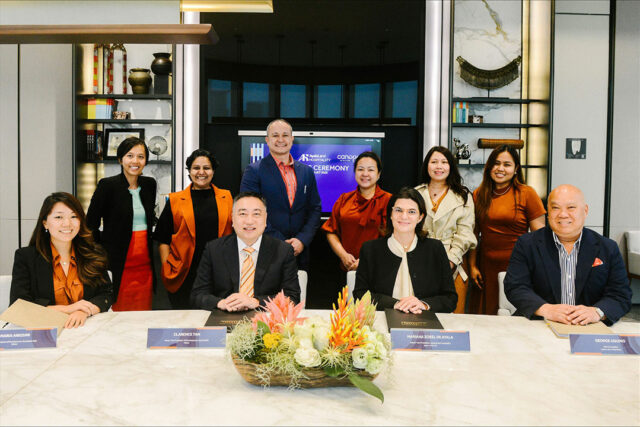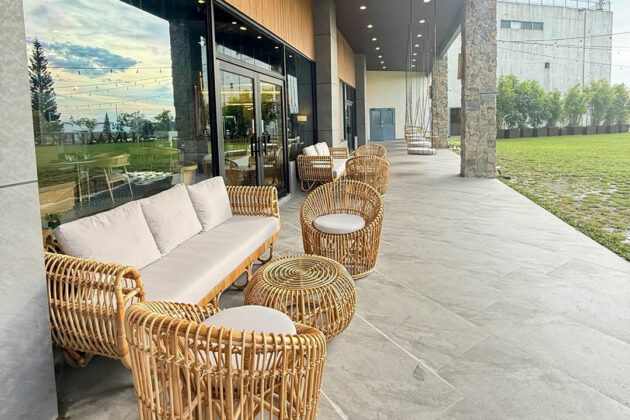By Chris Bryant
AS US President Donald Trump’s sweeping trade levies take effect and raise his country’s average duties to the highest since World War II, it’s easy to imagine globalization is in reverse and that a new era of protectionism, fragmentation, and reshoring has begun. Some of the gloom may be overdone.
Although the US was the chief architect of the multilateral trading system and has become the world’s most lucrative consumer market, it can’t by itself turn back the clock on global economic interdependence. Prosperity gains from comparative advantage and low-cost container shipping are too great for the rest of the world to ignore. Even as the US embraces self-sufficiency and reveals itself to be an unreliable economic partner, others are keen to keep trading.
“Despite all the talk of deglobalization, if you just look at the numbers, what we are seeing in the last two and a half years is an acceleration of globalization on the back of a huge commercial success from Chinese companies taking market share on the global stage,” Vincent Clerc, the chief executive officer of A. P. Moller-Maersk A/S, told investors last week.
This was after the container shipping giant reported surprisingly resilient demand outside the US and forecast global container volumes could increase by as much as 4% this year. “There is a new driver in container demand that is adding a lot of upside potential,” Clerc said, predicting this stronger Chinese-led growth might last “a few years.” (The US this week extended a pause of nosebleed tariffs on Chinese goods for another 90 days.)
Although China’s exports to the US have suffered a double-digit percentage hit since Trump first threatened a swathe of new duties in early April, it’s offset this by increasing exports to the rest of the world. Such robustness partly reflects stockpiling, and some economists expect a slowdown in the second-half of the year as Washington intensifies scrutiny of the transshipment of Chinese goods to the US via third countries.
Nevertheless, it’s also indicative of “a dramatic change in China’s trade orientation, away from reliance on the US and toward a broader, more diversified global footprint,” according to a report dated Aug. 8 by German asset manager DWS Group. “The competitiveness of Chinese exports as well as intensifying economic links with regions like the Middle East and Africa is a structural trend that is likely to prevail.”
German logistics giant DHL Group is seeing similar shifts in demand, with time-definite US express shipments with a guaranteed delivery date plunging 31% in the second-quarter, while its deliveries to Asia rose 2% and those to the Middle East and Africa jumped 8%.
Global trade “finds its way to keep flowing” and even in the current environment there are “still growth opportunities and growing trade lanes,” Melanie Kreis, DHL’s chief financial officer, told analysts last week. Another DHL executive, Ken Lee, who heads the Asia-Pacific express business, recently called globalization “too big to fail.”
I don’t wish to play down the impact of the world’s largest economy undermining the rules-based trading system and raising import taxes, which will impose unnecessary costs on consumers, blunt competition, dampen growth, delay investment, and cause global trade to grow more slowly than it otherwise would.
High tariffs on southeast Asian countries may undo some of the advantages of Chinese and western companies tapping new sources of cheap labor and diversifying their manufacturing footprints, a strategy known as China+1.
Furthermore, if China’s exports are diverted from the US to emerging markets, other countries may impose duties to protect domestic industries. (A reminder that China must do more to support demand by its own consumers.)
But with China accounting for more than 30% of global goods manufacturing and dominating in key decarbonization technologies, it’s hard to see the world swiftly turning its back on this highly efficient production. Much of the Global South has continued to import Chinese vehicles, which are cheap and of high quality, even as the US and Europe (to a lesser degree) raise trade barriers and warn about China’s industrial overcapacity.
One also shouldn’t forget that the majority of global trade doesn’t involve the US. Intra-Asia and Asia-Middle East trade corridors are “some of the fastest growing on the planet,” HSBC Holdings Plc CEO Georges Elhedery said during a call with analysts last month.
“Globalization is very much alive and well. It’s just taking a very, very different complexion,” Bill Winters, the boss of Standard Chartered Plc, told investors in late July, saying clients were diversifying supply chains, manufacturing, and distribution. The London-headquartered bank makes most of its money in Asia and the Middle East and has a large trade finance business.
Currently only around one-fifth of the value of all goods and services produced around the world end up in a different country, according to a DHL study in March, meaning global trade potential isn’t close to being exhausted.
“So far, global trade growth has been highly resilient, and we’ve also not seen all that much retaliation from countries hit by US tariffs. That’s partly because those countries recognize how much they benefit from trade,” Steven Altman, senior research scholar at the NYU Stern School of Business, told me. “I don’t see the US leading a global movement away from trade, and so far it appears globalization can survive Trump 2.0.”
Indeed, US protectionism and bullying are likely to convince trading partners to secure access to alternative markets and thereby draw them closer together. After being hit with some of the highest US tariff rates, Brazil and India last week reiterated plans to strengthen mutual trade ties. After striking a long-sought trade deal with the South American Mercosur bloc in December, the European Union should now get on and ratify it.
So, yes, supply chains face upheaval while the US and China are pulling apart, but that doesn’t mean globalization is dead. Rather we may be entering a new era, characterized by US retrenchment, Chinese companies investing overseas — and other countries trading more with each other.
BLOOMBERG OPINION


















